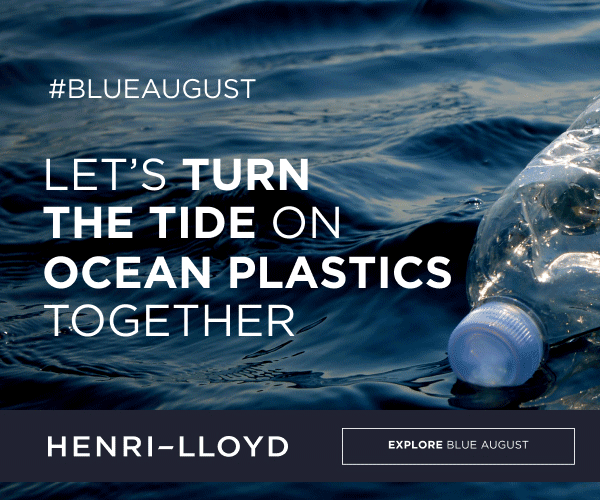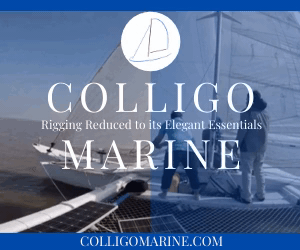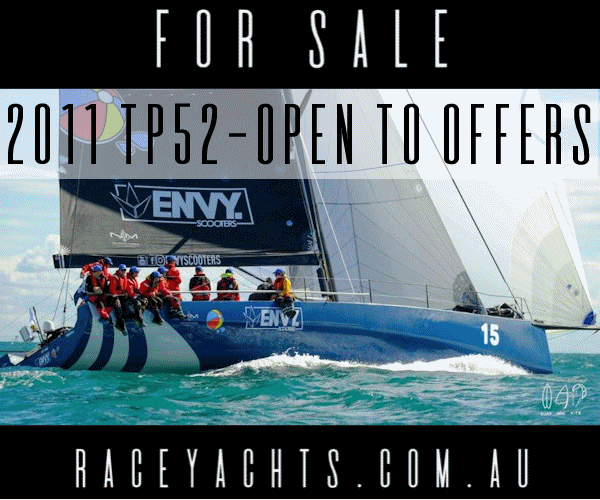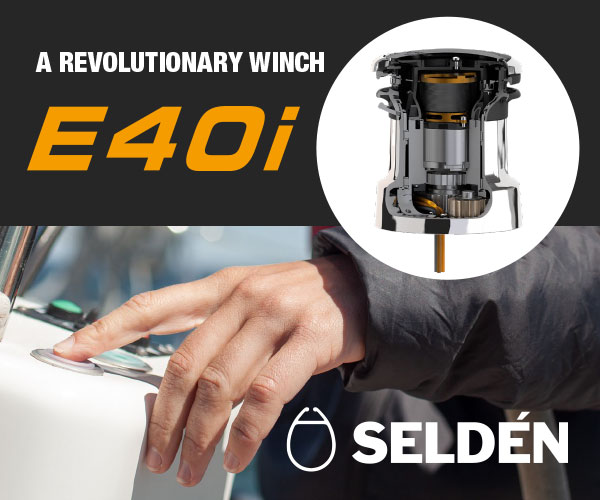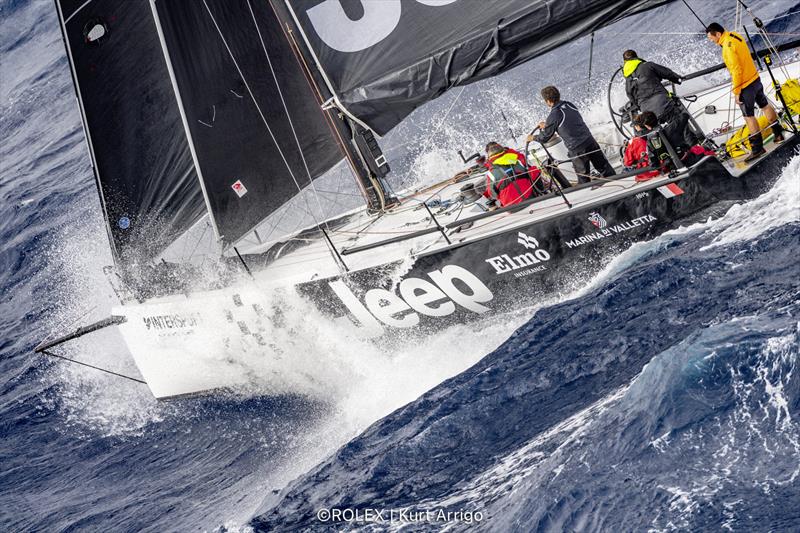
2021 Rolex Middle Sea Race still delivering
by Rolex Middle Sea Race 25 Oct 12:35 PDT
25 October 2021
With seven yachts in harbour, and no more expected until much later tonight (Monday) or the early hours of Tuesday, one might be excused for thinking the Rolex Middle Sea Race is over. Far from it.
Close to 100 yachts of the original 114 remain at sea and there is plenty left in a race that has so far delivered on its early promise. The weather pattern over the racetrack is in flux. For the smaller monohull yachts, now is the time to press on, particularly if their ambition extends beyond just completing the 606 nautical mile course.
The four large racing multihulls have all finished the 42nd Rolex Middle Sea Race, leaving only the Italian Neel 47 cruising trimaran, Minimole, on the course. Jason Carroll’s Argo, the American MOD70, is in the box seat having wrapped up the outright race record, multihull line honours and, for the moment, top of the leader board after MOCRA time correction. Carroll was understandably delighted: “It was an awesome race. It had a little bit of everything. We love the event, we love the course and, obviously, we are super excited to have broken the record and won line honours this year.” Argo’s elapsed time was 33 hours 29 minutes and 28 seconds, obliterating the previous race record of 47 hours 55 minutes and three seconds, set by the monohull maxi, Rambler, in 2007.
The three most powerful monohulls are also home and hosed down. The 30.48m/100ft VPLP/Verdier designed Comanche (CAY) led by Mitch Booth is the clubhouse leader, having taken monohull line honours, set a new monohull race record and outplayed their immediate opposition under IRC time correction. Booth was emphatic in his praise for this year’s race: “The Rolex Middle Sea Race has always been one of the pinnacle offshore races and the top guys love coming here. The line-up was great. It was a real honour to race against Skorpios and Rambler.” Comanche’s elapsed time of 40 hours 17 minutes and 45 seconds was also well inside the previous best.
Multihull Line Honours
Brian Thompson, one of the Argo afterguard offered some insight into their apparent clean sweep and mesmerising finish time. “We were very cautious at the start but got away cleanly,” he advised. “It was then great racing with Maserati and Mana. We were very evenly matched to Syracuse, when we just got into a lead, before Maserati got a bit of an edge on us through the Strait. We were then absolutely level at Strombolicchio.” At this point, it looked as though Maserati had made a key gain. “We were very impressed with the way they were sailing,” said Thompson, “They made a seven mile gain in the 22-knot downwind leg.” However, there was another twist to come.
“Just before dawn on Sunday, we were going through the middle of the Egadi Islands. Ideally, we wanted to be further offshore,” explained Thompson. “On the weather models you could see there was a wind hole behind Sicily. If you got too far south you could run out of the corridor of wind blowing from the north-east.” This is where Argo’s apparent disadvantage became an advantage. “We could see what was happening,” said Thompson. “When Maserati slowed, we knew they were getting into the light air. It happened really fast. The wind dropped. Maserati carried on a bit further, while we gybed and that got our seven miles back.”
It still was not over. “There was so much going on,” commented Thompson. “A line of squalls came across and we suddenly had 43 knots. We went into it with a full main and gennaker. We had to go head to wind to get down to just a double reefed main. Then as the wind dropped, we had to get the same sails back up again.”
It remained super tricky all the way past Pantelleria. Argo tried to cover while Maserati sought new breeze closer to Africa. “In the end, we both got the wind at the same time, and held our lead. It was 25 knots downwind and more locked in,” he said. Despite some hair-raising moments on the final leg and a 30-knot passage through the tight Comino Channel, the race was now won. For Thompson, it had been a “once in a lifetime weather opportunity.”
Monohull Line Honours
The monohull line honours contest had been no less enthralling. Skorpios crossed the line second on the water, six hours inside the old record, but 1.5 hours behind Comanche. Fernando Echavarri, the racing skipper, remarked: “We learnt a lot in the 42 hours, in all kinds of conditions – light winds, strong winds, sail changes. It has been a unique opportunity for the team to grow up.” Despite the disappointment of not repeating their line honours from this summer’s Rolex Fastnet Race, Echavarri could still draw positives: “It was great to line up with boats like this. To do the Rolex Middle Sea Race with such a fleet, including Comanche and Rambler, is just incredible. We are looking forward to the next race against them.”
Ahead of the race, Mitch Booth was confident the race record would be broken. His doubt was how the Comanche crew would perform against the opposition. “One of the key points of the race was going into the Strait of Messina,” he said. “We thought whoever popped out the other end first would have a big advantage with a building breeze on the other side.” Managing to stay close to Skorpios gave the crew confidence. “After passing Stromboli we felt we were in the game with Skorpios.” commented Booth. “We had to sail a smart tactical race to stay in contact. We had a few problems with some sail damage which set us back a bit, but Comanche is really fun to sail especially when the breeze is up and there is a lot of downwind reaching.” Apparently, the new owner just loved every minute of it. “No better way to start racing offshore than the Rolex Middle Sea Race this year,” added Booth.
The navigator, Will Oxley, was keen to share the kudos for a job well done. “We had a very strong afterguard. Mitch Booth, Kyle Langford and Tom Slingsby all contributed to the decision-making of the boat,” he emphasised. He went on to explain the final critical moment in the race came at the north-west corner of Sicily, just as with Argo. “We tried hard to stay to the east of the low pressure system rolling across the racetrack until the western end of Sicily,” he explained. “None of the meteorological models were lining up. There was a lot of thunderstorm activity and a number of large wind holes to be negotiated. We had to make a plan and analyse what we think was going to happen. We used whatever data we could to make sense of it all. It really paid off.” And just as Maserati strayed into the quicksand offering opportunity to Argo, so too did Skorpios. Comanche was well-positioned to take the chance, and rolled into a lead it would never relinquish.
As for Rambler, they sailed their usual polished performance, but were simply outgunned by more powerful opponents. Finishing the race in 46 hours 20 minutes 25 seconds, George David finally beat the time he set back in 2007 at the sixth time of asking.
The Main Body
As for the rest of the fleet, clumps have formed as the transitions between zones of pressure and other factors have begun to impact. The next group expected to finish comprises last year’s line honours winner, the VO70 I Love Poland, two Volvo 65s – Viva Mexico and Ambersail 2 (LTU) – plus the Slovenian entry, Way of Life, all in IRC Class One. They are struggling with a small area of low pressure that established itself off Lampedusa on Monday morning and appears to be slowly tracking towards to Malta. This frustrating scenario has allowed two IRC Class Two boats, Eric de Turckheim’s Teasing Machine (FRA) and Frederic Puzin’s Daguet 3 – Corum (FRA) to make inroads into their lead on the water and time correction.
In line astern, from Lampedusa back to Pantelleria, are some 16 yachts ranging from the Reichel/Pugh 60, Wild Joe (HUN), and the TP52 Paprec Recyclage (FRA) closest to the southernmost point of the course and the A13, Phosphorus 2 (GBR), which is just past Pantelleria. James Neville’s Ino XXX (GBR), in IRC Class Three, continues its fight with Maltese yacht Artie III, with Lee Satariano, Christian Ripard and Timmy Camilleri in the afterguard. Camilleri called in from close to Pantelleria. “Sunday was fast, exciting, very wet, heavy weather downwind sailing,” described Camilleri. “It was really exhilarating on the helm. The boat was built for those conditions. We hit 28 knots at times, which for a 40-footer is not bad.”
Fortunate to survive the conditions which, when not surfing on top of a wave could see a yacht plough into the bottom of the next, Camilleri sounded relieved by the change in conditions after Favignana. “We have good weather at the moment,” he continued. “We are taking the opportunity to dry out the boat and ourselves. We parked up for a bit at the northwest corner of Sicily, like most of the boats, and lost a bit of time before we got back into the breeze. We are now moving well and clocking up miles pretty quickly.”
Sending It
While the story of the race so far has been the blistering runs of the Maxi Multis and Monohulls, another significant theme is developing. Tucked in among this pack of yachts on the southward leg of the course is the 2021 Rolex Fastnet Race winner, Sunrise. Tom Kneen’s JPK 1180 is competing in IRC Class Five. The British crew left their immediate opposition in their wake with a sharp exit from Messina and some daring sailing from Stromboli to Trapani. They left IRC Class Four behind in a windless parking lot at Favignana, which has been the feature of Monday for many competing yachts.
Although not fully aware of their achievement so far, Kneen was in a reflective mood when he took time to report in from Pantelleria. “We did over 30 knots at one point after Stromboli and high 20s consistently. We were properly sending it,” he enthused, before tempering his apparent exhilaration. “It was terrifying if I was being perfectly honest. We were pushing our luck with the A4 spinnaker, likely to break something or someone. We peeled to an A5, fractional spinnaker, and were not much slower.”
Kneen has done the race before and was aware that there was a lot of racing ahead. “I was concerned whether it was possible for us to sustain this effort,” he explained. “It looked likely it was going to be largely downwind, and it was not clear the wind was going to drop. I should have been whooping and excited, but actually was a bit tense.”
The Rolex Middle Sea Race is anything but straight-forward and Sunrise was soon stuck in the hole off the Egadi Islands and working out how to plug through light and variable winds. That the crew has managed to do so and keep up with yachts, on paper at least, more powerful, is testament to its determination and skill in more than just heavy weather.
The IRC Class Four yachts held up at Favignana had started moving by Monday evening. The Maltese yachts Elusive 2 and Calypso, both in contention in their classes at the last transit point, will be happy to be making progress again.
Day 3 Class Update 1700 CEST:
IRC 1 AT LAMPEDUSA TRANSIT (11/14 YACHTS AROUND)
Comanche led Rambler with Caro the Botin 52 in third, and 70nm from the finish.
IRC 2 AT LAMPEDUSA TRANSIT (3/11 YACHTS AROUND)
Daguet 3 – Corum held the lead from Teasing Machine with Kuka 3 (SUI) in third.
IRC 3 AT PANTELLERIA TRANSIT (3/9 YACHTS AROUND)
Ino XXX led Artie III and Matador (SWE)
IRC 4 AT FAVIGNANA TRANSIT (14/17 YACHTS AROUND)
Elusive 2 led from L’Ange De Milon (FRA) with Sailplane (GBR) in third. Maltese yacht Ton Ton Laferla is also in the mix in fourth.
IRC 5 AT FAVIGNANA TRANSIT (13/16 YACHTS AROUND)
Sunrise led from Rossko Racer (RUS) and Joy-Spartivento (ITA)
IRC 6 AT FAVIGNANA TRANSIT (16/23 YACHTS AROUND)
The double hander Jangada (GBR) led from Foggy Dew (FRA) and Calypso (MLT). The Maltese double hander Vivace was in fifth place.
www.rolexmiddlesearace.com

